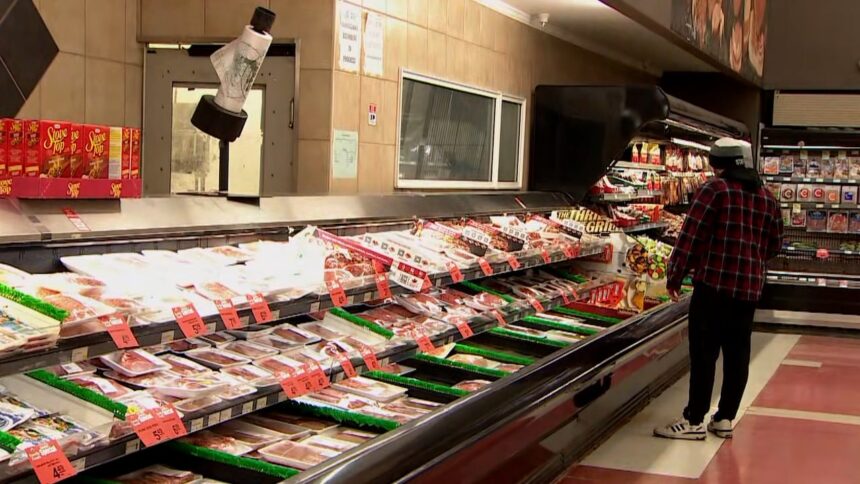Despite Canada’s overall inflation rate showing signs of cooling, millions of Canadians continue to feel the pinch at grocery checkout counters as food prices remain stubbornly high across the nation. The disconnect between official economic indicators and everyday reality has become a source of growing frustration for households struggling to maintain their standard of living.
“I’m spending nearly $300 more each month on groceries compared to two years ago,” says Meredith Johnson, a mother of three from Mississauga. “The government keeps telling us inflation is under control, but my grocery bills tell a completely different story.”
Recent data from Statistics Canada shows that while the headline inflation rate has declined to 2.7% from last year’s peak of over 8%, food inflation continues to outpace the overall rate. Grocery prices have increased by 4.3% year-over-year, with certain staples seeing even steeper climbs. Fresh produce prices have jumped 6.1%, dairy products 5.2%, and meat prices 4.7% compared to this time last year.
The price increases reflect a complex web of factors affecting Canada’s food system. Sylvain Charlebois, director of the Agri-Food Analytics Lab at Dalhousie University, points to several contributing elements. “We’re seeing the lingering effects of supply chain disruptions, labor shortages in food production and distribution, and the ongoing impact of climate change on agricultural yields,” Charlebois explains. “Additionally, the consolidated nature of Canada’s grocery sector has raised questions about whether competition is sufficient to keep prices in check.”
The persistence of high food prices has drawn attention from the federal government. Last month, Innovation Minister François-Philippe Champagne announced expanded powers for the Competition Bureau to investigate pricing practices in the grocery sector. The government has also introduced measures requiring major grocery chains to commit to price stabilization programs, though critics argue these initiatives lack meaningful enforcement mechanisms.
“The government’s approach amounts to little more than window dressing,” says Jim Stanford, economist and director of the Centre for Future Work. “Without substantial regulatory intervention or significant changes to Canada’s food production and distribution systems, consumers will continue bearing the brunt of these escalating costs.”
For many Canadian families, the impact of rising food prices extends beyond financial strain. Food Banks Canada reports a 35% increase in food bank usage since 2021, with first-time users accounting for nearly half of all visits. “We’re seeing middle-class families turning to food banks for the first time in their lives,” notes Kirstin Beardsley, CEO of Food Banks Canada. “This reflects a troubling trend where working Canadians simply cannot stretch their paychecks to cover basic necessities.”
The Bank of Canada‘s recent interest rate decisions reflect the challenging balance between controlling inflation and avoiding economic hardship. While the central bank has signaled it may continue cutting rates if inflation continues to moderate, the persistent elevation in food prices remains a significant concern for monetary policymakers.
Consumer advocates suggest several strategies for families coping with higher grocery bills. “Meal planning, buying seasonal products, reducing food waste, and utilizing loyalty programs can all help mitigate some costs,” advises Kerry Taylor, personal finance expert and founder of Squawkfox. “However, these individual actions can only go so far in addressing what is fundamentally a systemic issue.”
As Canadians prepare for upcoming federal elections, affordability has emerged as a central campaign issue. Political parties across the spectrum are proposing various solutions, from enhanced competition laws to expanded grocery rebates for lower-income households. The effectiveness of these proposals remains to be seen, but their prominence underscores the political salience of food inflation.
As we navigate this challenging economic landscape, Canadians are left wondering: will our food system evolve to deliver both affordability and sustainability, or are persistently higher grocery bills becoming our new normal? The answer may significantly shape both household budgets and political fortunes in the months ahead.










